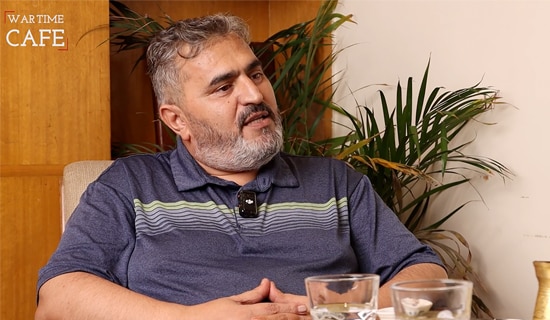An article published May 16, 2022 in the Taiwanese media outlet Nownews.com, titled "Countermeasures! The Way to Victory in the Han Kuang Exercise," discussed the 38th annual Han Kuang drill held by the Taiwanese military May 16-20. The Han Kuang live-fire component is scheduled for July 25-29.
The article stated that during the drills, a Chinese carrier group led by the Liaoning carrier was also training, off the eastern coast of Taiwan, "revealing its intention to seize the berthing area where Taiwan preserves its naval power."[1] It said that in wartime, the Taiwan army's preservation of its combat power will be under threat from Beijing, and that for this reason, Taiwan "must not only preserve its combat power," but also develop "active countermeasures." It added: "We can see that if only combat power is preserved, and if no countermeasures are in place to fight back, Taiwan may not be able to win a war against the Chinese Communist Army."
Below is the article:[2]

(Source: Taiwannews.com.tw)
Taiwan 'Must Not Only Preserve Its Combat Power, But Also Develop Active Countermeasures'
"The National Army's annual major training exercise, Han Kuang 38, debuted on May 16. From May 16 to May 20, the 'tabletop wargames' will be conducted. Then, in July, live-fire drills will be conducted.
"During the period of the 'tabletop wargames,' the Liaoning fleet of the Chinese Communist Army has also been training off the eastern coast of Taiwan, revealing its intention to seize the berthing area where Taiwan preserves its naval power.[3] In the future, the Taiwan army's preservation of its combat power will be under threat from the Chinese Communist Army. In the face of such threats, the National Army must not only preserve its combat power, but also develop active countermeasures.
"In the past, the Han Kuang exercises have always been based on the strategic concept of 'preserve combat power, overall air defense, joint sea control, and joint homeland defense.' That is to say, assuming that the enemy army invades Taiwan, the National Army will first preserve its combat power, transfer the existing army, navy, and air forces to other bases or civilian facilities, and then mobilize the combined forces of the three armies to annihilate the landing enemy forces and finally defend Taiwan. But this kind of scenario assumes that the Communist army would gather its fleet along the coast, first launch an attack on the west coast of Taiwan island, and then send ships to land on the coast.
"In order to keep the enemy offshore, the National Army has purchased mid- and short-range ballistic missiles, including the extended-range Hsiung Feng IIE missiles,[4] which are going to be mass-produced under the 'Hsiung Sheng Project.' The Hsiung Feng IIE missile has a range of 1,000 kilometers and can use two types of warheads: scattered warheads or high-explosive ones. It can attack most airports and rocket force bases in the eastern theater of the Communist Army. The Hsiung Feng missile will not start mass production until June 2022, at which point at least 100 missiles will be produced each year. It is anticipated to take at least five years before full deployment. However, the National Army lacks military GPS map information. In recent years, the Communist army's 'Three Attacks and Three Defenses Plan' has also included preventing precision missile attacks. Therefore, the performance and actual combat effectiveness of the Hsiung Feng missile is still unknown.
'The Communist Army May Not Only Attack Taiwan From The West Of Taiwan, But From Both East And West Simultaneously'
"The Communist army currently has two active aircraft carriers, the Liaoning and the Shandong, and a third one is expected to be launched in the second half of 2022. The Liaoning is a second-hand ship purchased from Ukraine. Its combat capacity is far from that of U.S. aircraft carriers. The Communist army mainly uses the Liaoning for training purposes. In the past, it has run drills between eastern Taiwan and the western Pacific, rehearsing to attack the U.S. fleet in the region. Because it is out of the range of the National Army's anti-ship missiles and fighter jets, the National Army can't do anything other than grasp the whereabouts of the Liaoning.
"With the accumulation of the combat power of the Communist aircraft carriers, the Communist army may not only attack Taiwan from the west of Taiwan, but from both east and west simultaneously. The National Army must further practice 'multi-layer deterrence' and actively seek out countermeasures, including increasing the range of anti-ship missiles and establishing a defensive submarine force.
"Looking back on the history of the 1958 Taiwan Strait Crisis, the National Army was caught off guard by the communist artillery shells, and the officers, soldiers and residents suffered heavy casualties. It was not until the 230mm howitzers, which were provided by the United States, arrived in Kinmen that the National Army finally was able to launch a counterattack against the military and transportation facilities of the Communist army and won the August 23 Artillery Battle. We can see that if only combat power is preserved, and if no countermeasures are in place to fight back, Taiwan may not be able to win a war against the Chinese Communist Army."
[1] See MEMRI Special Dispatch No. 99990, Taiwanese Media Outlet Nownews.com: Beijing May 'Carry Out A Pincer Attack Along Our Northeastern Waters Against The Eastern Coast Of Taiwan,' May 31, 2022.
[2] Nownews.com, May 16, 2022.
[3] See MEMRI Special Dispatch No. 99990, Taiwanese Media Outlet Nownews.com: Beijing May 'Carry Out A Pincer Attack Along Our Northeastern Waters Against The Eastern Coast Of Taiwan,' May 31, 2022.
[4] Taiwannews.com.tw/en/news/4292400, September 20, 2021.




